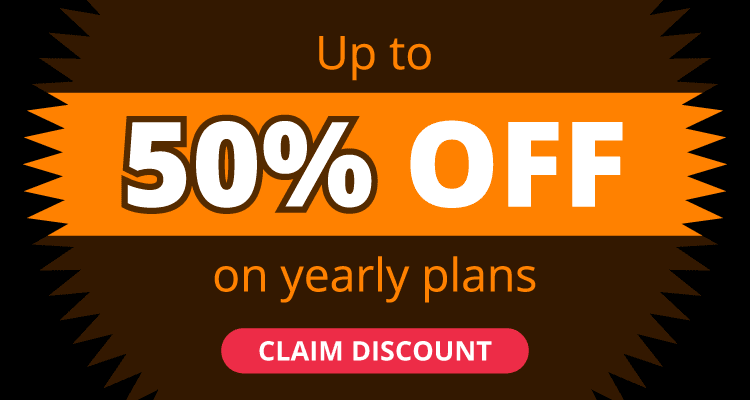
Motion-driven content has become a major driver of viral engagement in today’s fast-paced digital world. Brands are learning how animation can completely change their social media presence as design tools become easier to use. For example, an email templates builder that often supports animated elements is one of these tools. A lot of marketers first tried motion in animation email campaigns, but the same ideas work even better on social media. Brands can make powerful social visuals if they know how animations in email work, how an animated email grabs attention, and how animation for email gets people to do something. As more businesses use animation in email techniques on social media, they see better visibility, a stronger brand identity, and more engagement from their audience. Because motion-led email content and social media design are becoming more and more alike, marketers are rethinking how to use animation in emails and using the same strategy across all platforms. In the end, the main goal of email animations and social motion graphics is the same: to get people’s attention and keep them watching.
Why Animation Matters More Than Ever on Social Media
The Shift from Static to Dynamic Content
User’s social feeds are filled to the brim with videos, GIFs, micro-animations, and all sorts of visuals. Studies show short motion videos get more likes, comments, watch time, and shares than photos. This tells us why marketers moved to animated content. Back then, animated email campaigns were practiced and it became clear that movement captures a user’s attention. These lessons are why marketers focus on animation to create social content.
Just like animations made email users stop and scroll, social motion graphics create content interruptions that motivate user interactions. Many marketing teams start sketching out their videos by animating the email first. This shows the strong influence email animation strategies have on social content.
Using Emotion Through Movement
Movement carries emotion. When brands use animation for emails or social animations with deliberate pacing, timing, and rhythm, audiences respond more strongly. Motion helps:
- tone
- personality
- viewer guidance
- message emphasis
Because animated videos performed better than pictures, brands knew to apply animated videos to social media. Brands use emotional triggers in animated emails, which gives them confidence to use them in social media.
The way animated emails affect social media design is clear
What Email Campaigns Have Taught Us
Marketers understand animation principles in emails and understand:
- Where to focus viewers
- How to manage loop times
- How to use low file sizes
- How to boost CTAs
- How to manage viewer focus
These principles directly apply to creating content in Instagram Reels, TikTok, YouTube Shorts, Facebook videos, and Twitter content. For instance, in animated emails, a pivot is often made to focus on a singular object, like a button or a product. This same technique is used to draw attention to important offers or key messages. Just like emails, animated social videos must render quickly and be optimized for a variety of devices.
Mixing Animation for Email and Social Reels
Creators usually animate headers, icons, or micro-loop videos for emails and then create social media videos from those assets. Because both systems use the same components, the transition is seamless.
- Visual clarity
- Fast loading
- Device-based responsiveness
- Strong focal hierarchy
Knowing the components needed for each animation in emails makes the transition to social media seamless. This works especially well since both formats use the same aspect ratios, file types, and rendering methods.
The Psychology Behind Motion: Why It Works
Motion gives the brain something to focus on, and the social media user’s brain is especially needing this focus because they are mindlessly scrolling. To grab their attention, something must stand out, especially if it’s moving. Animation techniques like micro-movements, reveals, and seamless loops used in emails create focus, and this is why they work.
Key Psychological Triggers Used in Motion Content
- Attention capture: Movement used in animation email content helps interrupt scrolling.
- Emotional connection: The warmth and trust a brand conveys is built by smooth transition animation.
- Information clarity: Complex ideas that are simplified by step-by-step strategy animated email sequences.
- Retention improvement: Email messaging is easier to remember because of subtle content animation.
- Action motivation: There are popular CTA strategies in animation emails that use glowing pulsing buttons to encourage clicks.
- Visual storytelling: Animation can help brands quickly and dynamically tell a story.
These triggers are just as effective on social media platforms. Here, attention spans are minuscule.
Types of Motion Content That Boost Social Media Engagement
Micro-Animations
These small, looped movements, scaled from animations used in email design, serve either as features to showcase a product or as a user-guiding visuals.
GIFs and Looping Motions
These are ubiquitous on social media and were originally popularized in email design animations. They’re quick to craft, easy to share, and versatile in use.
Kinetic Typography
Moving, stretching, and fading text mimic email header animations and help retention as well as reinforcement through emphasis on certain phrases.
Character and Mascot Animation
Continuity is created as brands extend mascots from email animations to social media reels, stories, and posts.
AR and 3D Animation
These advanced versions of email animations are now found on social platforms in short 3D demonstrations and augmented reality effects.
How to Create High-Performing Animated Social Posts
Step-by-step framework:
- Start With an Objective: Determine if the motion is educational, promotional, or awareness of a product, just as you would when planning an animated email.
- Develop a Clear Focal Point: As is the standard practice with email animations, ensure one area captures the audience’s attention.
- Storyboard the Sequence: This helps organize the animated email concept to create a structure for social media.
- Make sure to keep it light: Borrow tips and tricks from animation to keep it as fast as possible when loading.
- Modify the dimensions to fit the platform: Maintaining the animation’s structure and design integrity while shifting the aspect ratios is crucial.
- Include gentle shifting for added motion graphics: Small tweaks to movement and shifting work wonders to amplify the animation’s message and help it shine across email and social graphics.
- Test across devices: Just like email animation previews, see the animation play on mobile, then tablet, and finally desktop.
That being said, it streamlines the workflow to maintain visual quality across the board.
Digital Duality Emphasis – Email and Social Combo Movement Strategy
Animation Repurposing from Emails to Social Media
It’s common for brands to design animation email content first. Given the email constraints, it requires an organized, effective, and plain approach to develop. Once finalized, these assets can then be manipulated to create social media artworks. This process boosts the overall social media presence while maintaining design integrity and consistency. It also avoids redundant work and streamlines production.
Visual Identity is Consistently Unified Across Platforms
Audiences perceive increased reliability and credibility when they see the same motion styles across social media platforms. Perhaps the glowing CTA buttons from the email animation are now paired with instant animations and the glow is pulsing to the beat in time with the track. Then, there’s the animation used in the email for the product demo, now reworked as an engaging TikTok.
People respond to consistency. It builds engagement, recall, and trust.
Obstacles with Social Media Animation
Size Limits & Compression
It makes things look worse. Marketers use compression techniques to keep their emails as sharp as possible, but stay under compression limits.
Differing Channels
A design that worked on an email header would not work on Tik Tok’s vertical. This is solved with Adaptive design.
Over Movement Animation
Too much movement can overwhelm an audience. Animators used their styles to create social posts that are clearer and easier to follow.
Predictions About Social Media Animation
AI Animation
The same systems that are assisting email animators are being updated to create social media animations with little to no required user input.
Layered-Micro Movement
A growing number of companies are incorporating animated text, light movements, and object motion. This is an advanced tactic used by email animators.
Interactive Movement Based Social Integration
This builds from email animation movements and is powered by AR.
Conclusion
Instructional design has changed digital engagement entirely. Marketers transitioned from email animation marketing strategy to social media content marketing because social media marketing today is based on email animation. The email animation principles to thrive on social media platforms today are clarity, motion hierarchy, loading efficiency, and emotional pacing to optimize on cloud computing today. With cloud computing and social email marketing today, the email animation and social marketing motion graphics technology for brands to captivate consumers will thrive on every digital engagement.



